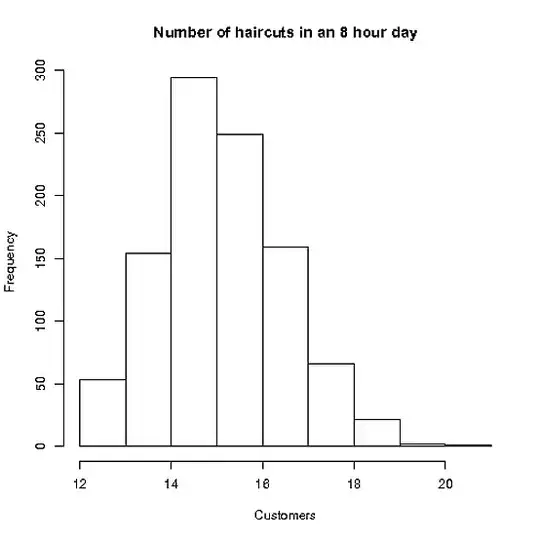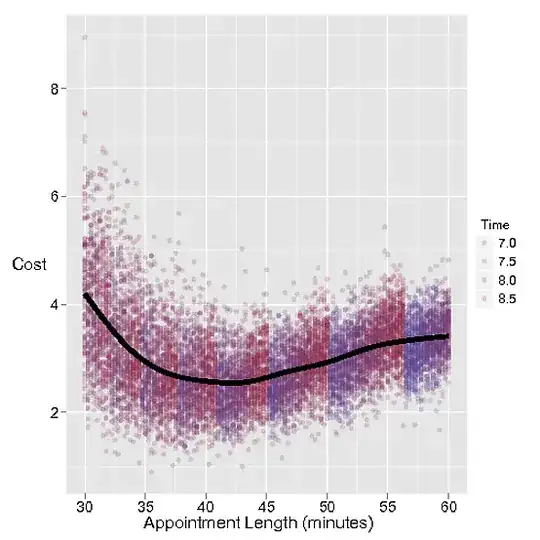My hairdresser Stacey always puts on a happy face, but is often stressed about managing her time. Today Stacey was overdue for my appointment and very apologetic. While getting my haircut I wondered: How long should her standard appointments be? (if the customer's preference for clean round numbers could be ignored, for a moment).
Something to consider is a certain 'ripple effect' where one very late customer can lead to a string of delayed appointments. In reality, hair-dressers intuitively learn to space appointments longer and longer as they fear of these stressful days. But an optimum, elegant solution must be achievable by some statistical genius out there.. (if we dumb down reality a little)
Let's assume
a) hair cutting times are normally distributed and
b) there's only one hair dresser.
The cost of setting appointments too long is obviously the hairdresser's time wasted waiting for the next appointment. Let's cost this wasted time $1 per minute.
But if the appointment's not long enough, the next customer is kept waiting, which is a heavier cost of $3 per minute to customer-loving Stacey.
Stacey works up to 8 hours per day, and has enough demand that she can fill as many appointments as she can fit in
The mean hair cut takes her 30 minutes, with a std. dev of 10 minutes. (let's also assume men's cuts and women's cuts are the same!)
EDIT - some have rightly pointed out that Stacey could attend to EARLY customers ahead of their appointed time. This adds another layer of complexity, but if we treat this as quite a realistic problem we need to include it. Let's forget my 90/10 assumption and try for an assumption perhaps a little closer to reality.
- Some customers are late and some are early. The mean of customers are 2 minutes late with a standard deviation of 2 minutes (sounds reasonably near reality no?)
Exactly how long should her appointments be?
@alexplanation sorry I've moved the goal posts on you! I'm sure R readers appreciate your answer.

